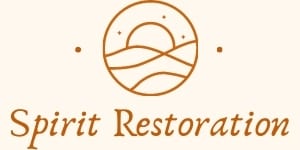
An individual’s spirituality is affected by a number of factors and it can have a strong influence on the person’s life. Recognition of its importance has led to a growing interest in the use of spiritual assessments. Clinicians today are more interested in assessing an individual’s spirituality for application in areas of counseling, mental health, hospice care, social work, and addiction rehab.
Using assessments of spirituality can help in diagnosis and treatment planning, with a strengths-based perspective that can help identify spiritual patterns and tap into the spiritual strengths of clients. Such assessments help in the understanding of what shapes an individual’s spirituality and can be used to identify problem areas as well as derive benefits from strength areas.
Benefits of assessing spirituality
Assessing an individual’s spirituality is helpful for many reasons:
- It can give a clear picture of the person’s spiritual influences and orientation.
- It can identify whether the person has healthy or unhealthy spiritual beliefs.
- It can determine if the person’s spiritual community can be a source of help.
- It can be used to plan and implement spiritual interventions better.
- It can determine if the person’s problems are rooted in spiritual issues.
Different ways to assess spirituality
Assessment of spirituality can be done using:
- Brief spiritual assessments
- Simple assessment instruments
- Art therapy assessments
- Quantitative assessment instruments
- Qualitative assessment instruments
- Diagrammatic spiritual assessment instruments
Spiritual timelines, life maps, ecomaps, and genograms all constitute diagrammatic assessments of an individual’s spirituality. While they all adopt a pictorial approach to assessing spirituality, they differ in the type of information sought from the individual. In this article, we’ll explain two such diagrammatic assessments: spiritual ecomaps and spiritual genograms.
Spiritual ecomaps
A spiritual ecomap is an assessment tool for spirituality that depicts a family system’s present relationships with critical spiritual ecological systems in space. Spiritual ecomaps are based on an anthropological framework that has been conceptualized in spiritual formation tradition with families that come from various spiritual traditions.
The focus is on the present and its rapid construction, allowing for identification of present strengths and interactions as opposed to focusing on the past. While other diagrammatic assessments tools for spirituality like life maps, timelines, and genograms focus on 3 previous generations of a person’s spiritual journey, spiritual ecomaps focus on the current spiritual story of the person.
Just as in the case of the conventional construction of ecograms, the immediate family system is represented as a circle at the center of the paper. Members of the family are then sketched inside the circle, using squares for males and circles for females. Important systems or domains of spirituality are represented in the form of circles on the outskirts of paper, labeled as respective systems inside the circle. These outer circles are placed around the family circle in a radius. The family circle may also just depict a single figure that represents the individual. Several spiritual systems may be strengths in certain traditions but people are encouraged to depict most relevant domains for their spiritual worldviews.
Through the construction of spiritual ecomaps, an individual’s relationships with God, faith communities, rituals, encounters with angels or demons, and other spiritual visits can be explored. Key strengths from spiritual ecomaps typically refer to:
- Relationship with God.
- Performance of rituals or spiritual practices like prayer, devotional reading, worship, meditation, singing hymns, and scripture study.
- Focus on God’s presence and involvement in everyday affairs.
- Association with faith communities like church and parachurch communities and involvement in church services, Bible studies, fellowship groups, youth groups, single associations.
It’s also important to take into consideration meaningful spiritual systems for the person, which may include:
- Person’s relationship with the spiritual tradition of parents.
- Relationship with people in their lives who are in positions of spiritual leadership like pastor, elder, or spiritual mentor.
The relationship between family systems as well as spiritual systems is represented through different sketched lines. Thick lines are representative of stronger, more powerful relationships while dashed lines depict the most fragile relationships. Jagged lines in a spiritual ecomap are used to depict conflicted relationships. The lines drawn have an arrow that indicates the flow of resources, energy, or interest. More in-depth relational dynamics can be derived from the inclusion of short descriptions and important dates into the ecomap. While lines are typically drawn between the family system and the spiritual system, they can also be drawn between each member of the family and the different spiritual systems.
Benefits and limitations of using spiritual ecomaps
Spiritual ecomaps are beneficial because they help in understanding the current spiritual strengths of a person. The spiritual assets available to a client can be identified and made use of to solve problems and offer a sense of support. This way, the amount of time spent on assessment is used to tap into current spiritual resources that the person possesses instead of trying to trace back to intergenerational spiritual beliefs.
Having a concrete object in the form of a diagrammatic representation like a spiritual ecomap can make discussions about the person’s life seem less threatening. Since they focus on interactions between spiritual systems in the environment and the family systems, they help to contextualize the experiences of the individual as opposed to putting emphasis on the individual that’s devoid of any context.
One limitation of using spiritual ecomaps as an assessment of a person’s spirituality is that the focus on present spiritual resources and assets may limit the understanding that can be derived from taking historical factors into consideration.
Spiritual genograms
A spiritual genogram is a diagrammatic representation of significant spiritual people and influences in the person’s life, illustrating the flow of spiritually rooted patterns over time. It typically traces back to 3 generations and depicts spirituality over these 3 generations.
It shows religious beliefs, affiliations, flow of spiritual resources, spiritual events, spiritual conflicts, and notable spiritual relationships. The people, ideas, places, and experiences that have shaped a person’s spiritual identity or lack thereof are identified. Multi-generational dynamics impacting present spiritual functioning are identified.
A spiritual genogram may include:
- Spiritual mentors and teachers
- Significant events like conversion and other experiences
- Ideas and passages from sacred writings

Genograms can be used to identify spiritual as well as religious strengths existing within clients’ families. They can be considered as a blueprint of complex inter-generational spiritual interactions.
When constructing a spiritual genogram, males are represented through squares and females through circles. Triangles and other shapes are used to represent people who have had a major spiritual impact on the individual but aren’t a part of their biological family.
Colors are used for shading the circles and squares to indicate spiritual tradition. Such color coding helps create a snapshot of the family’s spiritual composition. Different colors can be used to denote religious preference. Those whose religious preference isn’t known can be left uncolored.
Any change in religious preference can be represented by noting the date of change beside the circle or square and filling in the given space with the right color. This can also be represented by coloring the vertical segment that connects the child and parents.
The color scheme can also be used to depict level of commitment or theological orientation. Symbols can be effectively used to depict the person’s spiritual journey, including events like baptism, church memberships, and confirmations. Even statements can be added to the genogram to make note of important events or highlight personal strengths.
Double-headed arrows can be used to represent relationships that have a close reciprocal spiritual bond. A single arrowhead is used when the relationship is hierarchical and spiritual resources typically flow in one direction, like in the case of grandparent to grandchild. A thick line indicates strong, intimate relationships, while a jagged line between 2 individuals represents a relationship that has a lot of spiritual conflict.
Benefits and limitations of using spiritual genograms
Spiritual genograms are a very effective assessment tool in therapy, especially when the family system exercises a powerful control over the life of the client. This is especially important if the client’s problems involve certain members of the family or issues with the family of origin. It has proven to be a useful tool in family therapy and even couples therapy where spiritual strengths of partners are highlighted to increase intimacy levels in relationships or spiritual barriers are exposed to deal with possible conflicts.
They have been extremely helpful when used as a tool for healing in therapy for clients who seek to cope with spiritual problems or search for the meaning of life.
On the downside, spiritual genograms aren’t useful in situations where historical influences aren’t very important. The focus on the past may not be a great way to motivate clients who don’t have close relationships with family members.
Many people also can’t make connections between the present and their past so they may just end up viewing the construction of spiritual genograms as a waste of their time. If they don’t value the use of spiritual genograms for therapeutic purposes, they aren’t likely to adhere to treatment and this will jeopardize outcomes. The use of spiritual genograms may also not produce desired results if the people involved in therapy are uncomfortable discussing spiritual concerns in a therapeutic setting.
